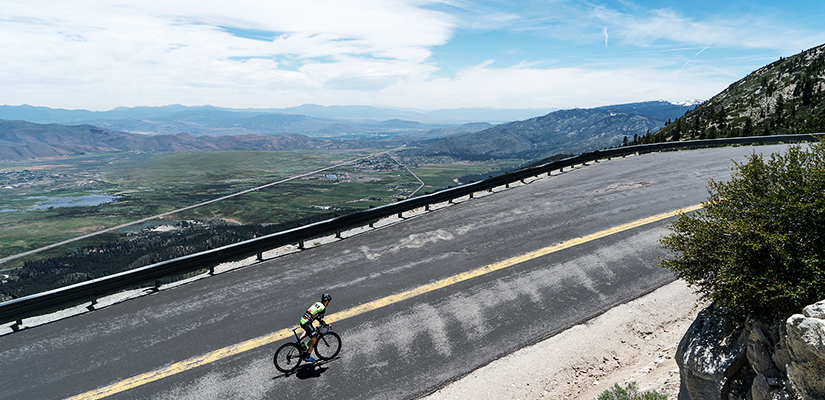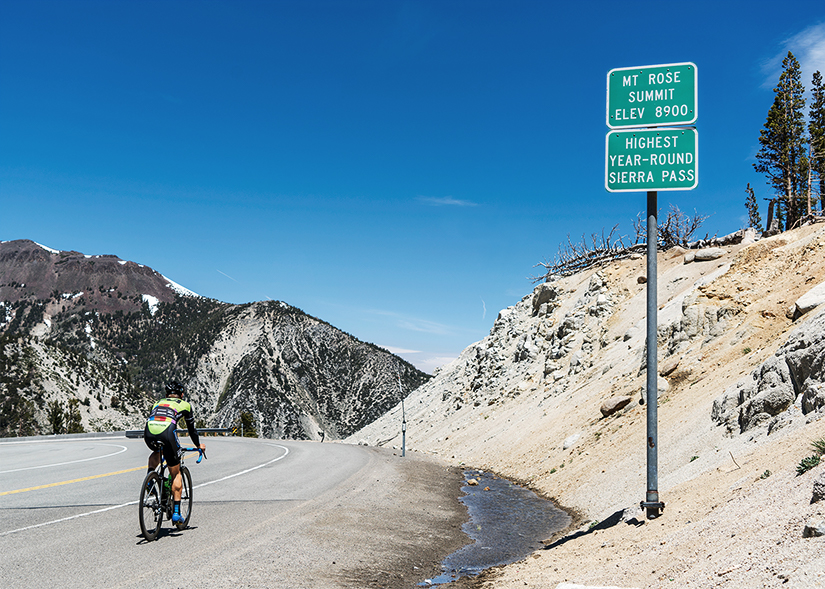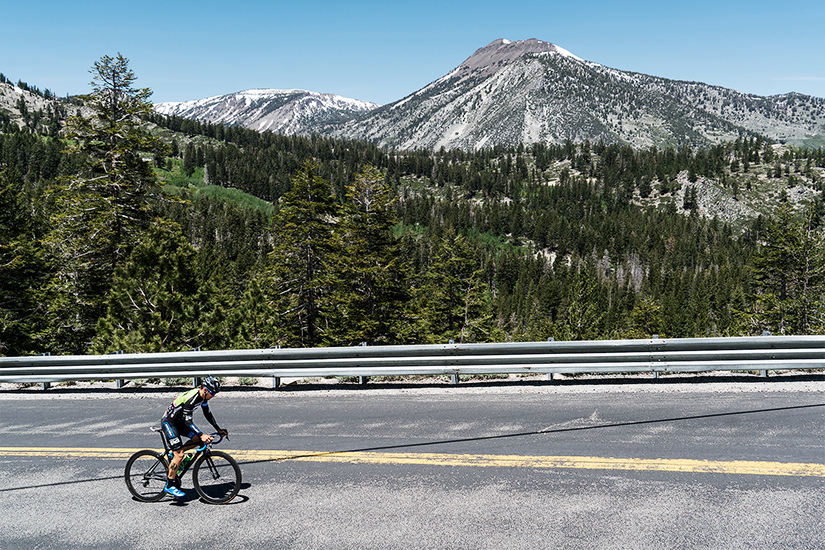Altitude Training: How Long Before You See Improvements?

The human body naturally adjusts to different elevations. Although you may not notice, on the cellular level it’s constantly adjusting to support your external environment. Cyclists have learned to use this knowledge to their advantage through what’s known as altitude training.
Altitude training helps to adjust the amount of oxygen your body is exposed to while you train or while you rest. When elevations change, so does your body’s process of erythropoiesis — the production of red blood cells. Red blood cells are responsible for carrying oxygen throughout your body from your lungs and heart to your organs and muscles. The more oxygen your circulatory system can distribute, the more aerobic work you can do. That’s the driving theory behind living, training and sleeping at different elevations.
Live High, Train Low Altitude (LHTL) vs. Hypoxic Training
Altitude training essentially falls into two categories: Live High, Train Low (LHTL) training and Hypoxic training. Together, they compose what are two of the most popular forms of altitude training.
LHTL altitude training is the most common form of elevation-variation training. By “living high”, your body facilitates altitude acclimatization; when you “train low” you take advantage of your acclimatized state at a lower altitude. The result? Metabolic and muscular adaptations that enhance your performance.

Cyclists who follow the LHTL strategy spend the majority of their time at high altitudes to capitalize off their body’s natural changes and give them an extra physiological boost come race day. “Living high” typically includes attending training camps or renting homes at high altitudes with easy access to lower-altitude courses where they “train low”. This is costly, but we’ll get to that later.
Hypoxic training takes a different approach to LHTL altitude training to achieve a similar result. Using a nitrogen tent or mask, athletes simulate time in oxygen deprived environments before training in high-oxygen environments. This method has grown in popularity over the years, but because few people have a spare nitrogen tent laying around, it’s mostly common among elite athletes. We’ll focus on LHTL training for the remainder of this post.
How Long It Takes to See Improvements with Altitude Training
As with any form of training, you won’t see results overnight. In this particular case, you likely won’t see substantial results for about four weeks — that’s the established minimum amount of altitude training specialists agree on. Within the first 7-10 days, there’s little to no difference in the number of red blood cells produced by your body. For the next three weeks, your body produces more red blood cells but there’s no significant performance enhancement. Only after around four weeks do you actually begin to perform better.
Enhanced erythropoiesis occurs between roughly 6,700 and 8,300 feet. Lower altitudes have minimal effects on your body, while higher altitudes don’t show any more significant enhancements than this range.
The Time Commitment Elevation Training Requires
According to Randall L. Wilber’s study on varying altitude environments, the largest performance improvements came from spending 22 hours or more per day above 6,500 feet. That’s 92% of the hours in your day spent at a higher altitude. Combine this daily time commitment with the term commitment of a minimum four weeks spent at altitude, and you’re spending 616 hours over the course of a month to achieve optimal results. After spending this period of time at this elevation, athletes in his study experienced an average increase of red blood cell volume by 8% — increasing the amount of oxygen your body can facilitate — and VO2 max by 4%.

LHTL altitude training can be an effective way to improve your performance. But is it worth it? The average athlete often finds it difficult to train just a few hours a week while pursuing so many other aspects of their life. Gaining a 4% increase in your performance can most definitely help you win, but the reality of LHTL altitude training seems to harder to actually achieve when your sole focus isn’t training. 616 hours per month is a time commitment only some pros can make. So, in theory, altitude training sounds great. But to actually carry it out in an effective manner often isn’t feasible for the majority of cyclists — no matter how badly the athlete wants to win. We’ve got some good news, though.
Even if spending four weeks above 6,500 feet isn’t an option, you can still benefit from spending shorter periods of time at high altitudes. If you’re planning a race in a higher altitude, experience training at a similar elevation helps you better prepare. Plus, there’s no discounting the confidence boost that comes from getting experience in a unique environment. The best part? It only takes a few runs to get an upper hand over a cyclist racing at altitude for the first time.
Attending altitude camps are great for gaining exposure to high elevations, but don’t forget the value of training with experienced cycling coaches. The structure, discipline, intensity and mechanics of these camps can really help you improve as an athlete. In fact, sometimes these results are even more beneficial than the actual altitude training.
Better Ways to Make Marginal Gains
There are plenty of ways you can make marginal performance gains like the ones you get from altitude training without hiking up a mountain. These recommendations are everyday changes you can make to your training that improve your performance — even if it’s just by a few percentage points. For a list of small but impactful changes you can make on the bike to get faster, check out our Head Coach Chad Timmerman’s Guide to Marginal Gains.
Listen to How the Pros Use Altitude Training
In this special episode of Ask a Cycling Coach, Coach Jonathan Lee discusses altitude training with Phil Gaimon during Stage 5 of the Tour of California. Hear what they had to say in the podcast below.
Additional Notes
TrainerRoad’s Ask a Cycling Coach podcast is dedicated to making you a faster cyclist. It gives you the chance to get answers to your cycling and triathlon training questions from USAC certified coaches Chad Timmerman, Jonathan Lee and special guests. Learn more about other topics we covered in the latest episode with our resources below:
If you have a question that you’d like to ask Coach Chad, submit your question here. We’ll do our best to answer them on the next episode of the Ask a Cycling Coach podcast.